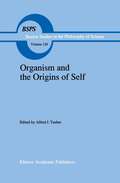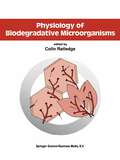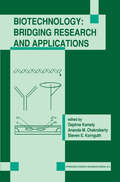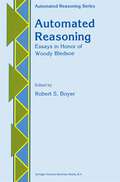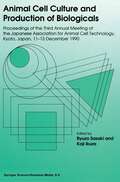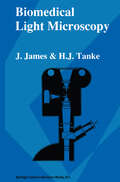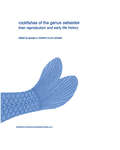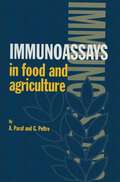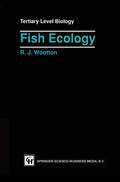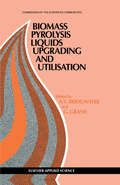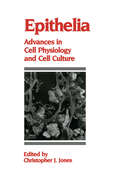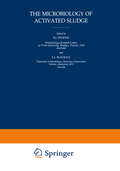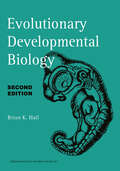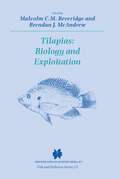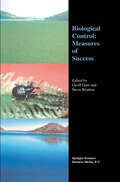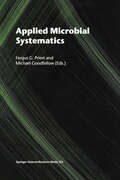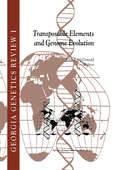- Table View
- List View
Human Cancer in Primary Culture, A Handbook (Developments in Oncology #64)
by J. R. W.MastersGrowing human cancer cells in primary culture requires patience, intuition, care and experience. This is one of the few areas where the wrinkled senior scientist can be more productive than the bright young post-doc. There are few mechanical aids, no automated procedures, and kits are unheard-of. There is no right way to do it and every tumour is different. But this book will make it easier! Chapter 1 on characterization is essential reading. Much published work is useless because of the failure to take two simple steps to characterise the cells. The first step is to fully record all the clinical data - the absence of this information can render the work valueless. The second step is to confirm the origin of the tissue to exclude cross contamination. The wastage of years of work can be avoided with the use of a simple DNA preparation with a couple of commercially-available probes. Chapter 2 describes the development of serum-free media. This is a goal many would like to achieve, particularly if someone else does it, as it is laborious and empirical. Defined serum-free medium is essential for studies of growth factors and has major advantages in the commercial preparation of cell products and other applications.
Studies on Large Branchiopod Biology and Aquaculture (Developments in Hydrobiology #64)
by Denton Belk Henri J. Dumont N. MunuswamyOrganism and the Origins of Self (Boston Studies in the Philosophy and History of Science #129)
by Robert S. Cohen"De la vaporisation et de la centralisation du Moi. Tout est la. " Charles Baudelaire (journal entry) This anthology is my visit to Oz. On sabbatical in 1988, I chose to reeducate myself in general biology, first broadening my erudition as an immunologist, and then extending that horizon into evolutionary biology and embryology. I was particularly attracted to reflections on the nature of the self as an organ ismic concept. I went in search of reorientation as a confused physician scientist, and came back with this book. Baum's Wizard of Oz presented opportunities for growth, and herein lies the purpose of this volume: in providing updated statements concerning the nature of the organism from both scientific and metaphysical perspectives, we might ponder the philo sophical basis of our research in the hope of gaining insight into our endeavor, not to mention the possibility of its enrichment; it is this contem plative view of our research which offers a unique dimension to this anthology. To that end, the project follows my idiosyncratic prejudices. The anthology derives in large measure from the symposium, "Organism and the Origin of Self' held at Boston University, April 3-4, 1990, under the auspices of the Boston University Center for the Philosophy and History of Science, with generous support of Robert Cohen and Jon Westling, and the organizational skills of Deborah Wilkes. The Symposium presented three ver sions of the Self from the vantages of embryology, evolution and medicine.
Biotechnology: Proceedings of the U.S.-Israel Research Conference on Advances in Applied Biotechnology Biotechnology June 24–30, 1990; Haifa, Israel
by Daphne Kamely A. M. Chakrabarty Steven E. KornguthBiotechnology is advancing at a rapid pace with numerous applications in medicine, industry, agriculture and environmental remediation. Recognizing this, government, industrial and academic research and development invest ment in biotechnology has expanded rapidly. The past decade has seen the emergence of applications of this technology with a dual-use potential. Mili tary applications focus on four major areas: biomedical technology, such as vaccine development and medical diagnostics; detection of toxins, chemicals and pathogens; material biotechnology; and biological decontamination, in cluding biodegradation and bioremediation. This conference emphasizes the non-medical applications of biotechnol ogy. The first two sessions focus on the synthesis and properties of molecules that may be used in detectors. The traditional approach to detection of chemical and biological agents relied on the development of specific assays or analyses for known agents. Advances in molecular biology have made possible the production of large quantities of toxins which were previously available in minute quantities, and the molecular engineering of toxins and pathogens with specific pharmacologic and physical-chemical properties. In addition to the traditional approaches to detection of specific known compounds, biotechnology now offers generic approaches to detection. Physiological targets, known as receptors, are primary targets for many drugs and toxins. Similarly, pathogens rely on receptors to gain access to cells. These receptors function as sensitive detectors, generating signals which are transduced and amplified.
Automated Reasoning: Essays in Honor of Woody Bledsoe (Automated Reasoning Series #1)
by Robert Stephen BoyerThese essays have been written to honor W. W. Bledsoe, a scientist who has contributed to such diverse fields as mathematics, systems analysis, pattern recognition, biology, artificial intelligence, and automated reasoning. The first essay provides a sketch of his life, emphasizing his scientific contributions. The diversity of the fields to which Bledsoe has contributed is reflected in the range of the other essays, which are original scientific contributions by some of his many friends and colleagues. Bledsoe is a founding father of the field of automated reasoning, and a majority of the essays are on that topic. These essays are collected together here not only to acknowledge Bledsoe's manifold and substantial scientific contributions but also to express our appreciation for the great care and energy that he has devoted to nurturing many of the scientists working in those scientific fields he has helped found. Robert S. Boyer Austin February, 1991 ix Acknow ledgements Thanks to Larry Wos, editor of the Journal of Automated Reasoning, and Derek Middleton and Martin Scrivener, Kluwer Academic editors, for sup porting the idea of initiating this collection of essays. Thanks to A. Michael Ballantyne and Michael Spivak, for help with lffi.TWC, especially in identifying many formatting problems and providing fixes.
Animal Cell Culture and Production of Biologicals: Proceedings of the Third Annual Meeting of the Japanese Association for Animal Cell Technology, held in Kyoto, December 11–13, 1990
by Ryuzo Sasaki Kouji IkuraIn the past two decades, the importance of animal cell technology has increased enormously. First, useful proteins can be produced by cultured animal cells, in which the desired product can be modified and organized so as to retain its biological function. Second, studies of cultured cells can provide information needed to understand molecular mechanisms that govern what happens in tissues, organs, and even entire organisms. For this second purpose, biochemists and molecular biologists may need a large number of such cells. Third, cultured cells can be used instead of tissues and organs clinically. The Third Annual Meeting of the Japanese Association for Animal Cell Technology (JAACT), at which participants from abroad were warmly welcomed, was held in Kyoto on December 11-13, 1990. It was organized around the idea of providing a place for the review of much new data on such applications of cultured cells and for exchanges of the views of the participants about progress in the field. This volume, divided into seven sections, contains the proceedings of the meeting. The first section reviews the molecular basis of the control of animal cell growth. In the following sections, physicochemical and biochemical factors for cell growth and production of biologicals, cell culture systems including serum-free culture, new cell lines, specific products and their characteristics, and in vitro assays for toxic, carcinogenic, and pharmacological effects are taken up in their tum.
Effective Industrial Membrane Processes: Benefits and Opportunities
by M. K. TurnerThe aim of the Technical Advisory Committee, in planning the c~:>Dtent of this meeting, was to illustrate the range of separation processes in which the use of membranes was practical and effective at an industrial scale. As Professor Strathmann reveals, the market for process equipment built around membranes is now worth about $5x1(f annually, and it seemed important to review this technology, and to point the direction of future technical advances. All but the most critical reader should find some items of interest. The Committee would admit to not fulftlling all of thier aims, although those delegates who attended the meeting in Edinburgh judged it a success. In the event it provided representative examples of processes from the food and beverage industry, from water treatment, and from the chemical industry, of which the removal of alcohol from fermented beverages, shipboard desalination and solvent recovery are three. The major uses of charged membranes and sterile processes are not covered, nor 9 is the largest market, $1.2x10 annually, for artificial kidney dialysis. However, it is interesting to see artificial kidney now finding an alternative use as a reactor for the production of monoclonal antibodies. We are also reminded by Professor Michel of the importance and efficiency of natural membranes in the kidney under conditions where fouling is crucial to their performance and enhances their selectivity.
Radionuclides in the Study of Marine Processes
by P. J. Kershaw D. S. WoodheadThe Norwich Symposium, 'Radionuclides in the Study of Marine Proces ses', is a sequel to the very successful conference held at Cherbourg, France in June 1987. The international character of the meeting has been maintained with thirty-eight contributions, from seventeen countries, being accepted for oral presentation. For many years, the radioactive properties of the naturally occurring radionuclides have been used to determine their distributions in the marine environment and, more generally, to gain an understanding of the dynamic processes which control their behaviour in attaining these distributions. More recently the inputs from human activities of both natural and artificial (i.e. man-made) radionuclides have provided additional opportunities for the study of marine processes on local, regional and global scales. Because the sources of artificial radionuclides are often reasonably well defined in space and time, and because a wider range of elements is represented, new viewpoints for the study of processes have become available. Although it is outside the scope of this Symposium, it must be acknowledged that the radiological protection requirements for radioactive waste disposal prac tices to be based on a sound scientific understanding of radionuclide behaviour in the sea have also provided a very strong impetus for the studies.
Biomedical Light Microscopy
by J. James H.J TankeNew interest in light microscopy of the last few years has not been backed up by adequate general literature. This book intends to fill the gap between specialized texts on detailed topics and general introductory booklets, mostly dealing with the use of the conventional light microscope only. In this short textbook both new developments in microscopy and basic facts of image formation will be treated, including often neglected topics such as axial resolving power, lens construction, photomicrography and correct use of phase-en interference contrast systems. Theoretical background will be dealt with as far as necessary for a well-considered application of these techniques enabling a deliberate choice for the approach of a certain problem. Over 150 illustrations (photomicrographs and diagrams) complete the information on microscopy of the nineties in the biomedical field, intended for scientists, doctors, technicians and research students. Many drawings have been contributed by the illustrator R. Kreuger; the photographic work has been executed by J. Peeterse. Secretarial assistance in preparing the manuscript was given by Ms T. M. S. Pierik. Dr M. J. Pearson has corrected the English of the final text.
Rockfishes of the genus Sebastes: Their reproduction and early life history (Developments in Environmental Biology of Fishes #11)
by George Boehlert Juro YamadaFish Ecology (Tertiary Level Biology)
by R. J. WoottonFishes live in a world that is unfamiliar to us. Although we may make or even more advanced brief visits to this other world using a snorkel, scuba diving equipment, we can never become a part of it. Yet, an understanding of fish ecology requires an awareness of the relationships between fishes and their environment. The purpose of this book is to introduce the ecology of fishes by describing the inter-relationships between fishes and the aquatic habitats they occupy. The book can be read in complementary ways. A sequential reading, chapter by chapter, covers the main themes of ecology, including habitat use, species interactions, migration, feeding, population dynamics and reproduction in relation to the major habitats occupied by fishes. An alternative reading selects a particular sort of habitat, such as rivers, and, by using the index and skipping from chapter to chapter, builds up a picture of the ecology of fishes living in that habitat. The text is written for advanced students. Its emphasis is on descriptive rather than quantitative ecology. It is assumed that the reader will be familiar with the basic biology of fishes, acquired from a text such as The Biology of Fishes (Bone and Marshall, 1982) also published in the Tertiary Level Biology series. I would like to thank Dr J. D. Fish and two anonymous reviewers who, within a tight time-schedule, tried to improve the text. Any mistakes and shortcomings are my contribution.
Biomass Pyrolysis Liquids Upgrading and Utilization
by A. V. Bridgwater G. GrassiBiomass pyrolysis has been practised for centuries in the manufacture of charcoal for industry and leisure. Only in the last two decades, however, has attention focussed on a better understanding of the science and technology, with the resultant benefits of better designed and controlled processes that give high yields of liquid products. These liquids, or 'bio-oil' as it is referred to, can be used in a variety of ways: -combustion to replace conventional fuel oil in boilers, process equipment such as kilns and in gas turbines for power generation; -upgrading by hydrotreating or with zeolites to gasoline, diesel and other hydrocarbon fuels, of chemicals; --extraction and upgrading to fuel additives and chemical specialities. Any charcoal produced can also be utilised to form char- water slurries, analogous to coal-water slurries, or bioi-oil slurries which may be used as liquid fuels in many combustion applications. A group of experts was set up in the EC Energy from Biomass programme to evaluate the status and opportunities for deriving useful liquid products from biomass pyrolysis. This book is a report of their findings and conclusions. It forms an authoritative guide to the wide range of technologies employed in biomass pyrolysis, and product upgrading, utilisation and characterisation. Recommendations and conclusions are included to identify promising areas of research and development that will be of value to researchers, planners and companies throughout the world.
Epithelia: Advances in Cell Physiology and Cell Culture
by C. J. JonesEpithelial cells probably constitute the most diverse group of cells found in the body. In addition to serving as interfaces between external and internal environments, their functions include ion and fluid secretion and reabsorp tion, protein exocytosis, hormone secretion, recognition, surface protection and the control of ciliary movement. By their very exposure on the surfaces of the body, epithelial cells are subjected to wide-ranging assault, by micro organisms and by chemical and physical forces. They are the targets for abrasion, infection and malignant transformation. Some epithelial cells show altered behaviour in inherited syndromes, such as cystic fibrosis, characterized by serious pancreatic and pulmonary disease. In view of the importance of epithelia and the fact that their function can be altered by environmental and inherited factors, they are the subject of intensive research, particularly so in the case of cancer where most tumours are of epithelial origin. The use of animal tissues in epithelial research continues to provide important advances and this, coupled with the need to focus more on human tissues, has prompted a greater research emphasis on accessible human epithelia and on the establishment of cell cultures from animal and human sources. For primary cell cultures and cell lines to be of value, they need to express properties appropriate to their progenitors and relevant to the study in progress.
The Microbiology of Activated Sludge
by Robert J. Seviour L. BlackallThis book has been a long time in preparation. Initially it grew out of our frustrating attempts over the past ten years to identify the filamentous bacteria seen in large numbers in most activated sludge plants, and the realization that we know very little about them and the other microbial populations in these systems. Unfortunately this book does not provide many answers to the problems these filamentous bacteria can cause, but we hope it might encourage microbiologists and engineers to communi cate more with each other and to spend some time trying to understand the tax onomy, ecology and physiology of activated sludge microbes. It is now very timely, for example, to try to provide these filamentous bacteria with proper taxonomically valid names and to determine their correct place in bacterial classifications. This book is not meant to compete directly with the books by Gray (1989, 1990) nor the excellent manual published by Jenkins and coworkers (1993b), which has been invaluable to us and others trying to identify filamentous bacteria. Wanner's book (1994a) also provides an excellent account of the problems of bulking and foaming caused by filamentous bacteria. These publications and others by Eikelboom's group have made an enormous contribution to the study of filamentous bacteria, and will con tinue to do so.
Evolutionary Developmental Biology
by Brian K. HallAlthough evolutionary developmental biology is a new field, its origins lie in the last century; the search for connections between embryonic development (ontogeny) and evolutionary change (phylogeny) has been a long one. Evolutionary developmental biology is however more than just a fusion of the fields of developmental and evolutionary biology. It forges a unification of genomic, developmental, organismal, population and natural selection approaches to evolutionary change. It is concerned with how developmental processes evolve; how evolution produces novel structures, functions and behaviours; and how development, evolution and ecology are integrated to bring about and stabilize evolutionary change. The previous edition of this title, published in 1992, defined the terms and laid out the field for evolutionary developmental biology. This field is now one of the most active and fast growing within biology and this is reflected in this second edition, which is more than twice the length of the original and brought completely up to date. There are new chapters on major transitions in animal evolution, expanded coverage of comparative embryonic development and the inclusion of recent advances in genetics and molecular biology. The book is divided into eight parts which: place evolutionary developmental biology in the historical context of the search for relationships between development and evolution; detail the historical background leading to evolutionary embryology; explore embryos in development and embryos in evolution; discuss the relationship between embryos, evolution, environment and ecology; discuss the dilemma for homology of the fact that development evolves; deal with the importance of understanding how embryos measure time and place both through development and evolutionarily through heterochrony and heterotrophy; and set out the principles and processes that underlie evolutionary developmental biology. With over one hundred illustrations and photographs, extensive cross-referencing between chapters and boxes for ancillary material, this latest edition will be of immense interest to graduate and advanced undergraduate students in cell, developmental and molecular biology, and in zoology, evolution, ecology and entomology; in fact anyone with an interest in this new and increasingly important and interdisciplinary field which unifies biology.
Tilapias: Biology and Exploitation (Fish & Fisheries Series #25)
by M. C. M. Beveridge B. McAndrewReferred to in the Bible, pictured on the wall-friezes of ancient Egyptian tombs, and a subject of fascination for generations of scientists, the tilapias (Cichlidae: Tilapiini) have featured in the diet and culture of humankind for thousands of years. The present century has seen their spread from Africa throughout the tropics and sub-tropics, largely for food and fisheries purposes. This book attempts to pull together our knowledge of this important group - their biology and fisheries and aquaculture - in a single volume, something that has not been done comprehensively for nearly two decades. A succession of chapters by acknowledged authorities covers evolution, phylogenetic relationships and biogeography, reproductive biology, mating systems and parental care, diet, feeding and digestive physiology, environmental physiology and energetics, the role of tilapias in ecosystems, population dynamics and management, genetics, seed production, nutrition, farming, economics and marketing. The book is aimed at biologists, fisheries scientists, aquaculturists, and all interested in aquatic ecology.
Biological Control: Measures of Success
by G. Gurr Jeff Waage S. D. WrattenAs well as examining successful biological control programmes this book analyses why the majority of attempts fail. Off-target and other negative effects of biological control are also dealt with. Chapters contributed by leading international researchers and practitioners in all areas of biological control afford the book a breadth of coverage and depth of analysis not possible with a single author volume. Combined with the use of other experts to review chapters and editorial oversight to ensure thematic integrity of the volume, this book provides the most authoritative analysis of biological control published. Key aspects addressed include how success may be measured, how successful biological control has been to date and how may it be made more successful in the future. With extensive use of contemporary examples, photographs, figures and tables this book will be invaluable to advanced undergraduate and postgraduate students as well as being a `must' for all involved in making biological control successful.
Handbook on Ingredients for Aquaculture Feeds
by J.W. Hertrampf F. Piedad-PascualCurrent growth in global aquaculture is paralleled by an equally significant increase in companies involved in aquafeed manufacture. Latest information has identified over 1,200 such companies, not including those organizations in production of a variety of other materials, i. e. , vitamins, minerals, and therapeutics, all used in varying degrees in proper feed formulation. Aquaculture industries raising particular economically valued species, i. e. , penaeid shrimps and salmonids, are making major demands on feed ingredients, while relatively new industries, such as til apia farming, portent a significant acceleration in demand for properly formulated aquafeeds by the end of the present decade and into the next century. As requirements for aquafeeds increases, shortages are anticipated in various ingredients, especially widely used proteinaceous resources such as fish meal. A variety of other proteinaceous commodities are being considered as partial or complete replacement for fish meal, especially use of plant protein sources such as soybean meal. In the past five years, vegetable protein meal production has increased 10% while fish meal production has dropped over 50%, since 1989, largely attributed to overfishing and serious decline in wild stock. Throughout fisheries processing industries, traditional concepts as "waste" have given way to more prudent approaches, emphasizing total by-product recovery. Feed costs are a major consideration in aquaculture where in some groups, i. e. , salmonids, high protein-containing feeds using quality fish meal, can account for as much as 40 to 60% of production costs.
Applied Microbial Systematics
by F. G. Priest Michael GoodfellowModern approaches to microbial classification and identification, particularly those based on nucleic acid analysis, have raised the awareness and interest of microbiologists in systematics during the past decade. The extended scope of the subject has revolutionized microbial ecology with the demonstration of uncultivable microorganisms as a major component of the biosphere and evolution, with the ribosomal RNA phylogenetic tree as the basis of current classifications. However, advances in microbial systematics have also had enormous impact on other, diverse aspects of microbiology such as animal pathogenicity, plant-microbe interactions and relationships with food. In this book, we survey and discuss in depth the contribution of modern taxonomic approaches to our understanding of the microbiology of these various systems. The book does not concentrate on methods - these have been well reported elsewhere - instead it provides a unique insight into the application and value of modern systematics in diverse branches of microbiology. It will be of value to microbiologists at both research and technical levels who need to appreciate the range of organisms with which they work and the diversity within them. It will also be of value to teachers and students of microbiology courses who want to understand how systematics can enhance microbiology beyond the routine of classification, nomenclature, and identification.
Life at Interfaces and Under Extreme Conditions: Proceedings of the 33rd European Marine Biology Symposium, held at Wilhelmshaven, Germany, 7–11 September 1998 (Developments in Hydrobiology #151)
by IngridKröncke SabineDittmann GerdLiebezeitInterfaces between media, whether air-water or sediment-water interfaces or organisms themselves, pose considerable problems to marine organisms attempting to live at these boundaries. In the present volume, a number of authors address various aspects of these two topics. Locations under scrutiny range from intertidal areas to the deep sea, while both macro-and meiofaunal organisms are investigated. Distribution patterns and effects of variable temperatures, pressures, and salinities are analysed. Aspects of fouling induction and prevention are also addressed. This book is intended as a progress report from the 33rd European Marine Biology Symposium held in Wilhelmshaven, Germany, in September 1998.
Transposable Elements and Genome Evolution (Georgia Genetics Review #1)
by J. F. McDonaldOnce considered merely `selfish' or `parasitic' DNA, transposable elements are today recognized as being of major biological significance. Not only are these elements a major source of mutation, they have contributed both directly and indirectly to the evolution of genome structure and function. On October 8-10, 1999, 100 molecular biologists and evolutionists representing 11 countries met on the campus of The University of Georgia in Athens for the inaugural Georgia Genetics Symposium. The topics of presentations ranged from how the elements themselves have evolved to the impact transposable elements have had on the evolution of their host genomes. The papers in this volume therefore represent state-of-the-art thinking, by leading world experts in the field, on the evolutionary significance of transposable elements.
Aquatic Oligochaetes: Proceedings of the 7th International Symposium on Aquatic Oligochaetes held in Presque Isle, Maine, USA, 18–22 August 1997 (Developments in Hydrobiology #139)
by K. A. Coates T. B. Reynoldson B. M. HealyThe book contains papers on the biology of aquatic oligochaetes and some related groups. They cover a wide range of topics including phylogeny, taxonomy, geographic distribution, freshwater and marine ecology, population dynamics, histology and ultrastructure, physiology and behaviour. The wide scope is in line with recent trends in annelid research with less emphasis on pollution studies and faunistics and a renewed interest in experimental biology using new techniques.
Cell Engineering: Transient Expression (Cell Engineering #2)
by MohamedAl-RubeaiThe advantages of the baculovirus system are rooted in the properties of the virus and the host (insect, or cell lines derived from it). During the normal infection cycle, two forms of the virus are produced: an early budded virus (BY) form (Kost et al. , 2000), in which the viral DNA and structural proteins are surrounded by membrane derived from the infected cell; and a late occluded form (occlusion-derived virus, ODy), consisting of enveloped viral cores which are embedded in a crystal matrix of viral proteins. The principal component of the matrix is the abundantly expressed protein polyhedrin. The budded virus rapidly spreads the infection from cell to cell within the insect host, resulting ultimately in the complete liquefaction of the host, and release of occluded virus into the environment. The occluded form protects the released virus, allowing it to survive for long periods in the environment until ingested by another host. In the alkaline environment ofthe insect gut, the protective protein matrix is removed, and the life cycle is repeated. In insect cell cultures, only the BV form of baculovirus is required, and the polyhedrin gene may be replaced with the gene for the recombinant protein. An additional benefit of replacing or deleting polyhedrin is that it effectively makes the virus unable to survive outside the laboratory, an advantage in terms of environmental safety. The system is intrinsically safe to animals, being unable to replicate in species other than a limited range of insects.


